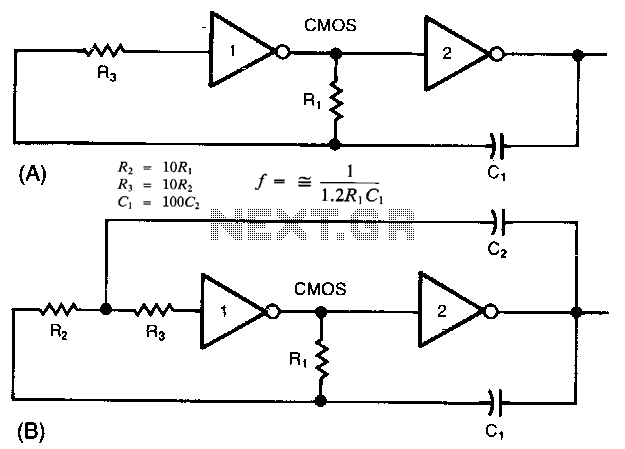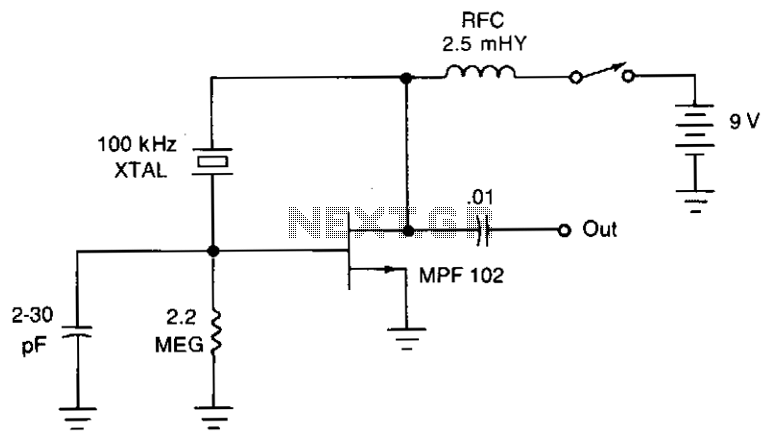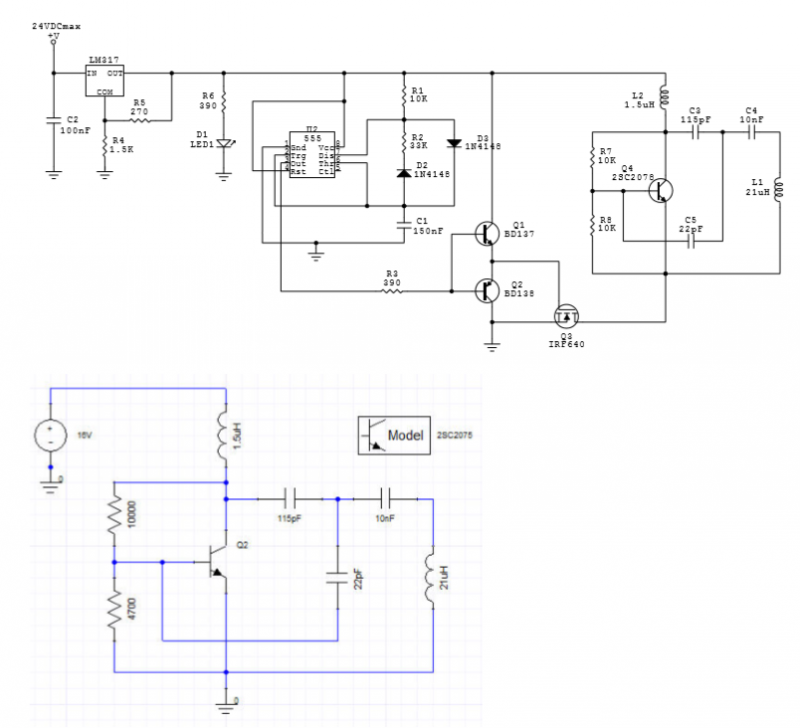
oscillator

An oscillator is an electronic circuit that converts energy from a direct-current source into a periodically varying electric output.
An oscillator is a fundamental component in various electronic systems, serving the purpose of generating oscillating signals, typically in the form of sine waves, square waves, or other periodic waveforms. The basic operation of an oscillator involves the conversion of direct current (DC) from a power source into alternating current (AC) signals. This periodic output can be utilized in numerous applications, including signal processing, clock generation for digital circuits, and modulation in communication systems.
Oscillators can be classified into several types based on their design and operational principles. Common types include:
1. **LC Oscillators**: These oscillators use inductors (L) and capacitors (C) to determine the frequency of oscillation. The resonance between the inductor and capacitor creates a natural frequency that the circuit oscillates at. Examples include the Hartley and Colpitts oscillators.
2. **RC Oscillators**: Utilizing resistors (R) and capacitors (C), RC oscillators generate signals based on the charging and discharging of capacitors through resistors. The phase shift introduced by the RC network allows for sustained oscillation. A well-known example is the Wien bridge oscillator.
3. **Crystal Oscillators**: These rely on the mechanical resonance of a vibrating crystal, typically quartz, to produce highly stable and precise frequencies. They are commonly used in clocks, radios, and computers due to their accuracy.
4. **Relaxation Oscillators**: These oscillators produce non-sinusoidal waveforms, such as square or sawtooth waves, by charging and discharging a capacitor through a resistor. They are often used in timer circuits and waveform generators.
The design of an oscillator circuit typically includes an active component, such as a transistor or operational amplifier, to provide gain and feedback necessary for oscillation. The feedback loop must be carefully designed to ensure that the output signal is in phase with the input signal, allowing for sustained oscillation.
In summary, oscillators play a crucial role in modern electronics, converting DC energy into useful AC signals for a variety of applications, and their design can vary widely depending on the required frequency stability, waveform shape, and application context.oscillator. An electronic circuit that converts energy from a direct-current source to a periodically varying electric output.. 🔗 External reference
An oscillator is a fundamental component in various electronic systems, serving the purpose of generating oscillating signals, typically in the form of sine waves, square waves, or other periodic waveforms. The basic operation of an oscillator involves the conversion of direct current (DC) from a power source into alternating current (AC) signals. This periodic output can be utilized in numerous applications, including signal processing, clock generation for digital circuits, and modulation in communication systems.
Oscillators can be classified into several types based on their design and operational principles. Common types include:
1. **LC Oscillators**: These oscillators use inductors (L) and capacitors (C) to determine the frequency of oscillation. The resonance between the inductor and capacitor creates a natural frequency that the circuit oscillates at. Examples include the Hartley and Colpitts oscillators.
2. **RC Oscillators**: Utilizing resistors (R) and capacitors (C), RC oscillators generate signals based on the charging and discharging of capacitors through resistors. The phase shift introduced by the RC network allows for sustained oscillation. A well-known example is the Wien bridge oscillator.
3. **Crystal Oscillators**: These rely on the mechanical resonance of a vibrating crystal, typically quartz, to produce highly stable and precise frequencies. They are commonly used in clocks, radios, and computers due to their accuracy.
4. **Relaxation Oscillators**: These oscillators produce non-sinusoidal waveforms, such as square or sawtooth waves, by charging and discharging a capacitor through a resistor. They are often used in timer circuits and waveform generators.
The design of an oscillator circuit typically includes an active component, such as a transistor or operational amplifier, to provide gain and feedback necessary for oscillation. The feedback loop must be carefully designed to ensure that the output signal is in phase with the input signal, allowing for sustained oscillation.
In summary, oscillators play a crucial role in modern electronics, converting DC energy into useful AC signals for a variety of applications, and their design can vary widely depending on the required frequency stability, waveform shape, and application context.oscillator. An electronic circuit that converts energy from a direct-current source to a periodically varying electric output.. 🔗 External reference
Warning: include(partials/cookie-banner.php): Failed to open stream: Permission denied in /var/www/html/nextgr/view-circuit.php on line 713
Warning: include(): Failed opening 'partials/cookie-banner.php' for inclusion (include_path='.:/usr/share/php') in /var/www/html/nextgr/view-circuit.php on line 713





